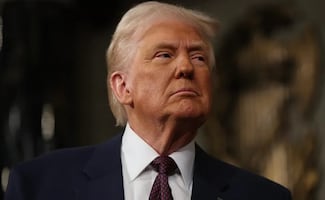Más Información

México toma ventaja en el suministro petrolero a Cuba, según Financial Times; caída venezolana marca nuevo escenario

Trump evalúa intervención militar en Groenlandia; Casa Blanca confirma que se estudian “diversas opciones”

Delcy Rodríguez decreta 7 días de duelo en Venezuela; rinde homenaje a "jóvenes mártires" que defendieron a Maduro

Maduro tiene inmunidad por ser presidente de Venezuela, dice fiscal; no puede ser arrestado o enjuiciado por "tribunales extranjeros"
On Candlemas , celebrated on February 2, Mexican families get together to enjoy delicious tamales , provided by the person who got a little plastic baby Jesus inside their Rosca de Reyes on January 8.
So on this date, people dress their baby Jesus figurines up with elaborate gowns and costumes and later enjoy a traditional dish . Outfits for baby Jesus range between MXN $50 and over MXN $200.

Every year, people get their baby Jesus ready by taking them to special shops, usually, located in markets, where they are fixed, painted and dressed up. People then take them to church to bless them.

According to historian David Guerrero, Candlemas went from a religious celebration to a popular festivity.
The historian explains that this Catholic celebration was two origins: the end of the Virgin Mary’s quarantine and the presentation of baby Jesus. However, it also takes place during planting season, celebrated by indigenous communities before colonization.
Recommended: Candlemas: Haute Couture for Baby Jesus
Moreover, in Mexico, this celebration revolves around food, with tamales as the main act. Indigenous people, tamales were prepared and eaten during special occasion but for colonizers, they were food meant for the lower class.
David Guerrero explains that it wasn’t until the 20th century, after the Mexican Revolution, when the religious tradition became widely popular in a time when nationalism strengthened cultural identity.
The historian added that Candlemas is the third most important religious celebration in the country, after Christmas and Easter.
break
Tamales to celebrate Candlemas
According to chef Ana María Arroyo, there are around 500 tamal varieties in Mexico and explained that before the arrival of Spanish colonizers, tamales resembled tortillas. Moreover, tamales transformed during colonial times, when people added lard and meat to the recipe.

In Mexico City, a local seller says she sells up to 1,000 tamales during Candlemas. The most traditional flavors are mole, green salsa, rajas, and dulce.
Recommended: Don't miss these tamal festivals in Mexico
gm
Noticias según tus intereses
[Publicidad]
[Publicidad]










